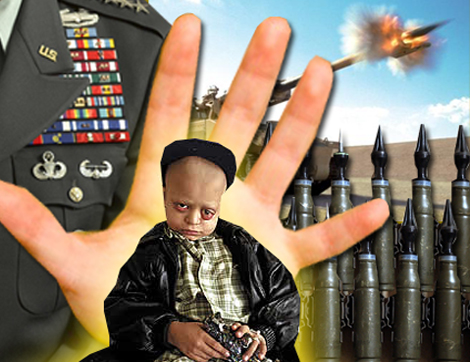
By Richard Walker
In a move seen by medical experts worldwide as an effort to suppress the truth about the horrors of depleted uranium (DU) munitions, the United Nations (UN) health arm, the World Health Organization (WHO), along with the Ministry of Health of Iraq (MoH) on September 13, 2013, produced a report that was not even authored, meaning no experts attached their names to it, on birth defects among Iraqi babies in which DU was not even considered a factor.
The report was published on the WHO website at a time when birth defects among Iraqi babies have been rising steadily, especially in areas like Najaf and Fallujah, where DU shells were used indiscriminately, killing and injuring large numbers of civilians. Some estimates for the 2003 death toll in Iraq put the civilian casualties in Fallujah as high as 75% to 80%.
DU is a byproduct of the nuclear industry. It is added to munitions to increase penetration, as DU is significantly denser than steel. The side effect, though, is that, where DU is used, it pollutes everything in the area. While no exact figures exist for the amount of exploded DU in Iraq, it is believed to have been in the metric tons.
It would not be the first time WHO has suppressed he truth about the use of DU weapons in Iraq. In 2004, a study co-authored by Dr. Keith Baverstock, a radiation expert hired by the WHO, was not published. According to Baverstock, it was censored because WHO was pressured by the International Atomic Energy Agency, which was trying to promote nuclear power. Baverstock warned there was a danger in the dry atmosphere of Iraq that particles from exploding DU shells and missiles could be carried on the air and inhaled by people for years to come.
Baverstock pointed to the fact the United States and UK governments had consistently refused to provide data on the location where DU weapons were used during the Iraq war.
The Lancet, the renowned British medical journal, was confounded by the WHO failure to consider a linkage between toxic munitions and rising birth defects. Instead, the WHO report concluded the percentage of birth defects was either in keeping with, or even lower than international figures. That statement contradicted all previous evidence, including evidence the WHO had previously accepted from medical experts, who had studied the effects of DU in Iraq.
The Lancet pointed to Iraqi experts like Samira Alaani, a Fallujah pediatrician, whose 2011 report found 15% of all babies born in the city since 2003 had “congenital malformations.” A similar study in Basra by another expert put the figure there at 17%.
A factor rarely mentioned is the potential effects of DU on children yet to be born to U.S. Iraq war veterans, who served in places like Fallujah, Basra and Najaf.
There is nothing new about the suppression of information on this topic. Serbians still press the U.S. and the North Atlantic Treaty Organization to disclose how many DU weapons were used in the 1999 79-day air campaign against the former Yugoslavia. According to Serbians, the weapons used have since resulted in birth defects.
Palestinians also have cause to ask the world why no one has condemned Israel for using DU weapons in the heavily populated Gaza strip. There is also the question of why Israel ignores evidence its Dimona nuclear weapons plant threatens the health of the surrounding population. Israel has so far been able to convince the locals that unusual medical issues are the result of Bedouin livestock.


